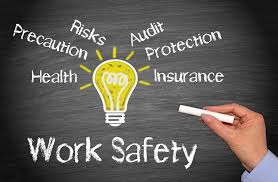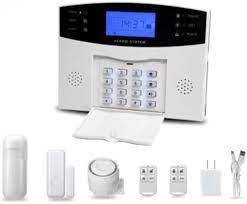Safety Audit: Why it’s Important and How to Conduct One
Safety is a top priority in any workplace, and one of the best ways to ensure that safety measures are being followed is through a safety audit. A safety audit is a systematic review of an organization’s safety policies, procedures, and practices to identify potential hazards and assess the effectiveness of existing safety measures.
Why is a Safety Audit Important?
A safety audit helps organizations identify potential risks before they turn into accidents or incidents. By conducting an audit, organizations can evaluate their current safety measures and determine if they are effective in preventing accidents or injuries. This helps companies develop strategies to improve their safety culture and reduce the risk of accidents.
In addition, conducting regular safety audits can help organizations stay compliant with local regulations. Many regulatory bodies require companies to conduct regular audits to ensure that they are meeting certain standards for workplace safety.
How to Conduct a Safety Audit
- Identify the Scope: The first step in conducting a safety audit is to identify the scope of the audit. This includes identifying which areas or departments will be audited, as well as which specific aspects of workplace safety will be evaluated.
- Gather Information: Once you have identified the scope of the audit, gather all relevant information related to workplace safety in those areas. This includes policies, procedures, training manuals, incident reports, and any other relevant documentation.
- Evaluate Existing Safety Measures: Review all existing policies and procedures related to workplace safety and assess their effectiveness in preventing accidents or injuries.
- Identify Potential Hazards: Conduct a physical inspection of the workplace to identify potential hazards such as unsafe equipment, hazardous materials, or unsafe work practices.
- Develop Recommendations: Based on your findings from steps 3 and 4 above, develop recommendations for improving workplace safety. These recommendations should be specific, measurable, achievable, relevant, and time-bound (SMART).
- Implement Recommendations: Once you have developed your recommendations, it’s time to implement them. This may include updating policies and procedures, providing additional training, or investing in new safety equipment.
- Monitor Progress: Regularly monitor progress to ensure that the recommendations are being implemented effectively and that workplace safety is improving.
Conclusion
Conducting regular safety audits is an important part of ensuring workplace safety. By identifying potential hazards and assessing the effectiveness of existing safety measures, organizations can develop strategies to improve their safety culture and reduce the risk of accidents or injuries. Remember, workplace safety should always be a top priority for any organization.
Understanding Safety Audits: Types, Components, and Importance
- What is meant by safety audit and its types?
- What are the three types of safety audits?
- What is included in a safety audit?
- What is safety audit and why is it important?
What is meant by safety audit and its types?
A safety audit is a process of evaluating and assessing the safety measures and procedures in place within an organization. The main objective of a safety audit is to identify potential hazards, assess the effectiveness of existing safety measures, and provide recommendations for improvement. Safety audits can be conducted by internal or external auditors.
There are several types of safety audits:
- Compliance Audit: This type of audit is conducted to ensure that an organization is complying with all applicable laws, regulations, and standards related to workplace safety.
- Management System Audit: This type of audit evaluates the effectiveness of an organization’s management system for ensuring workplace safety. It examines policies, procedures, training programs, incident reporting systems, and other elements that contribute to a safe work environment.
- Program Audit: This type of audit focuses on specific safety programs within an organization such as emergency response plans, hazard communication programs, or machine guarding programs.
- Workplace Inspection: This type of audit involves a physical inspection of the workplace to identify potential hazards such as unsafe equipment or hazardous materials.
- Behavioral Audit: This type of audit evaluates employee behavior related to workplace safety. It examines whether employees are following established safety procedures and identifies opportunities for improvement.
- Process Safety Audit: This type of audit focuses on identifying potential hazards associated with specific processes or operations within an organization such as chemical handling or welding operations.
In summary, a safety audit is a critical tool for ensuring workplace safety. By identifying potential hazards and assessing the effectiveness of existing safety measures, organizations can develop strategies to improve their overall safety culture and reduce the risk of accidents or injuries.
What are the three types of safety audits?
The three types of safety audits are as follows:
Compliance Audit: A compliance audit is conducted to ensure that the organization is complying with all relevant legal and regulatory requirements related to workplace safety. This type of audit focuses on identifying any gaps or deficiencies in the organization’s compliance with these requirements.
Management System Audit: A management system audit evaluates the effectiveness of an organization’s safety management system (SMS). The SMS includes policies, procedures, and practices designed to manage workplace safety risks. This type of audit assesses whether the SMS is being implemented effectively and whether it is achieving its intended objectives.
3. Workplace Inspection: A workplace inspection is a physical inspection of the workplace to identify potential hazards and unsafe conditions. This type of audit focuses on identifying any physical hazards that could lead to accidents or injuries, such as unsafe equipment, hazardous materials, or unsafe work practices.
What is included in a safety audit?
A safety audit is a systematic review of an organization’s safety policies, procedures, and practices to identify potential hazards and assess the effectiveness of existing safety measures. A comprehensive safety audit should include the following elements:
- Review of Safety Policies and Procedures: The auditor will review the organization’s safety policies and procedures to ensure that they are up-to-date, relevant, and effective in preventing accidents or injuries.
- Physical Inspection: The auditor will conduct a physical inspection of the workplace to identify potential hazards such as unsafe equipment, hazardous materials, or unsafe work practices.
- Employee Interviews: The auditor may conduct interviews with employees to gather information about workplace safety practices and identify areas for improvement.
- Incident Investigation: The auditor will review incident reports to identify any common patterns or trends that may indicate areas for improvement in workplace safety.
- Documentation Review: The auditor will review all relevant documentation related to workplace safety such as training manuals, inspection reports, and maintenance records.
- Risk Assessment: The auditor will assess the level of risk associated with different tasks or activities performed in the workplace to determine if additional safety measures are needed.
- Recommendations: Based on their findings from the above elements, the auditor will develop recommendations for improving workplace safety. These recommendations should be specific, measurable, achievable, relevant, and time-bound (SMART).
- Implementation Plan: Once recommendations have been developed, an implementation plan should be created that identifies who is responsible for implementing each recommendation and when it will be completed.
- Follow-Up Audit: A follow-up audit should be conducted after a period of time has elapsed to ensure that recommendations have been implemented effectively and that workplace safety has improved.
Overall, a comprehensive safety audit should provide a detailed evaluation of an organization’s current safety measures and provide actionable recommendations for improving workplace safety.
What is safety audit and why is it important?
A safety audit is a systematic review of an organization’s safety policies, procedures, and practices to identify potential hazards and assess the effectiveness of existing safety measures. The purpose of a safety audit is to evaluate the current state of workplace safety and identify areas where improvements can be made.
Safety audits are important for several reasons. Firstly, they help organizations identify potential risks before they turn into accidents or incidents. By conducting an audit, organizations can evaluate their current safety measures and determine if they are effective in preventing accidents or injuries. This helps companies develop strategies to improve their safety culture and reduce the risk of accidents.
Secondly, conducting regular safety audits can help organizations stay compliant with local regulations. Many regulatory bodies require companies to conduct regular audits to ensure that they are meeting certain standards for workplace safety.
Finally, a safety audit can help improve employee morale by demonstrating that the company is committed to providing a safe work environment. When employees feel safe at work, they are more productive and engaged in their work.
Overall, a safety audit is an essential tool for any organization that wants to ensure workplace safety and compliance with regulations while also improving employee morale and productivity.



